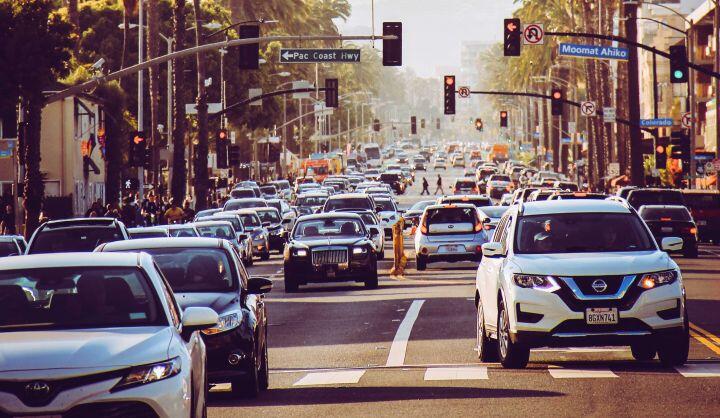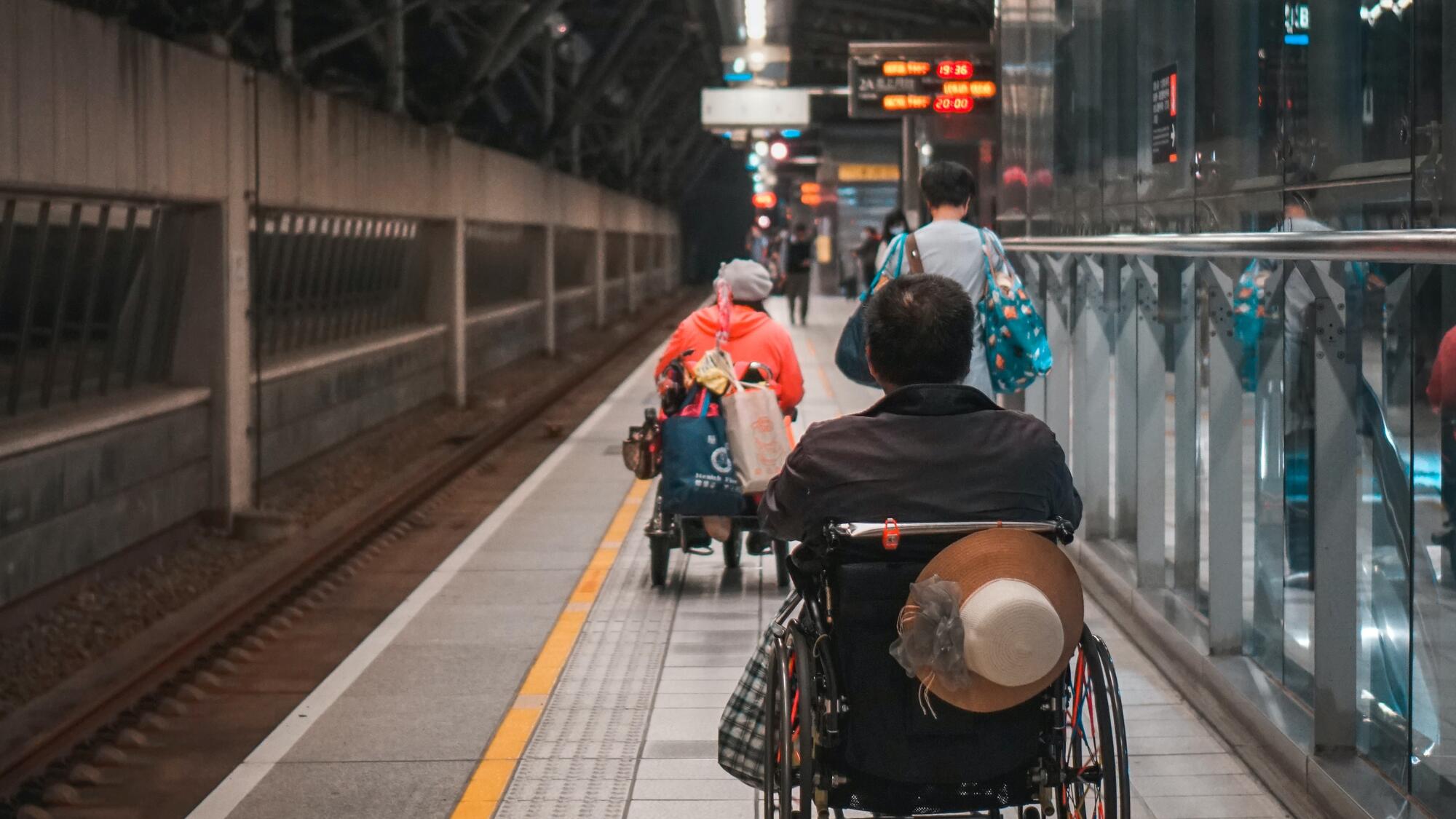- December 18, 2019
- Mobility
In today’s rapidly-changing transportation landscape, Seleta Reynolds, the general manager of the Los Angeles Department of Transportation, is guiding mobility from a place of empathy and equity. Reynolds uses partnerships, policy levers, and incentives to increase access to transportation while decreasing negative health outcomes from vehicle emissions. Read on to discover why she wants to move beyond Mobility as a Service, how government can manage the digital transportation realm, and the importance of diversity in transit departments.
Betsy Gardner: Thanks for talking this call with me today! So, I know you’ve done work on Mobility as a Service, but for readers who aren’t familiar, can you briefly explain that concept?
Seleta Reynolds: Sure, and I think it’s important to note that Mobility as a Service is one of these terms that’s become really blobby, I think it means a lot of different things to a lot of different people. It’s a term like “sustainability” or “complete streets” where nobody has placed a really precise definition on it, so I would almost call it a term of art at this point, even though I think there are folks who are trying to categorize different levels of Mobility as a Service.
But the brass ring of Mobility as a Service is this idea that you would pay for transportation the same way you pay for other utilities you use, whether it’s your water or your power, you would pay for it as you use it, by use. You could envision a universe where you’re paying your monthly transportation or Mobility as a Service bill but what it includes is access to a whole suite of options like a bus pass, a bike share pass, a scooter or micro-mobility pass, maybe ride hailing pass, or a toll pass.
I think the idea behind it is giving people access to make transitions among different providers seamless, and easy to understand, and easy to book and pay for, whether they are public transit or private mobility providers. And potentially having an app that wraps around that, giving you a way to map out your trip from start to finish, and even make decisions on metrics besides time like carbon footprint or calories burned.
BG: Those last metrics are really interesting! You said that it would be public and private services that people could move between, so what role do you think the city plays in that landscape?
SR: I think the role of the public transit provider is to first of all deliver really high-quality public transit and focus on our services, really thinking about how we deliver those measured against people’s real lives and what their needs are. So we have to deliver our core services first. Second, I think our role is to put rules in place, to prevent walled gardens or monopolies. To insist, for example, that any provider who wants to have access to the market in a city must make its API available to third party vendors who are making those apps that enable those services. And there may be other rules along those lines that have to do with data sharing, equitable service, even fare pricing, that the public sector should have a role in setting. There’s a fine balance to be had between making sure that private companies are providing services that are really market responsive, and making sure there is some public accountability once people grow dependent on those services.
For example, if the public sector is going to pull back its bike sharing system since there are so many scooters and dockless bikes, then the public sector really ought to be able to have some oversight or influence over the fare structure that those companies are providing, and potentially even invest some public dollars to offset the cost of providing that service. If you don’t do things like that, then what you get are companies that are maybe doubling or tripling their prices with no notice to users, and leaving people stranded. And if the public sector has said “Ok, we’re going to abdicate this responsibility to the private sector” then the public sector has some responsibility to ensure that those services remain available to everyone.
And I don’t think there’s anybody other than the public sector, really at a regional or state level, who can resolve issues around integrating various payment platforms. That’s really one of the main barriers to Mobility as a Service. It’s not so much, “Is there an app that aggregates all of these choices?” It’s, “Are we insisting that those payment platforms be able to integrate on the back end so that you can pay for them in a single app?” And I think that work can only be done by the public sector, at a level above local.
BG: In terms of the city being responsible for equity, would the cities use regulations to make sure that certain values and the public good are still central in Mobility as a Service?
SR: I think so. But we don’t have the tools that allow us to do that yet, in anything other than a very heavy-handed manner. For example, I can influence whether or not micro-mobility companies make their APIs available to third-party app providers because I have a permitted relationship with those companies, and I’m in a situation where I have the authority to hold them accountable. I can also hold them accountable to the provision of equitable services and require them to allow people who don’t have access to credit to access their services, the same way we do in the bikeshare programs that are municipally funded and run.
But that is different than the tools that are available to me for oversight of the ride hailing business. I just don’t have the ability yet to say to Uber and Lyft, “Here are the service level requirements for low-income neighborhoods, and I’m going to require you to give people the ability to go in and purchase a $20 pre-loaded debit card and use that on your platform, so they can access your service even if they don’t have access to credit.”
I don’t have any tools currently available to allow me to do that. So then what you have are private mobility companies that are making decisions purely through a profit lens, through an accountability to shareholders lens, and not accountability to the general public. So you’re sort of trusting that those things are aligned but they increasingly are not. I do think there’s a stronger role that the public sector needs to play around those things. But it just varies quite a bit among modes, whether or not we have that ability.
BG: Do you think that if you can make those changes, then you’ll also improve the unequal legacy of a lot of transit systems — which led to some unequal health outcomes?
SR: I think that’s a possibility, but that leaves out a really important step that we’re only just beginning to explore in transportation and that’s atonement. When you go into a community that is surrounded by freeways but trapped from opportunity by low levels of auto ownership combined with really diffuse land use patterns that make it almost impossible to reach jobs on a consistent basis without a car — all of these are legacies of decisions made over several decades by people who were in my seat, or in seats above me, in elected office at the state or national level.
Big infrastructure project decisions, redlining, land use decisions — these have created the conditions we currently see. These neighborhoods are the ones where we’ve got a lot of kids with asthma, and parents who are working multiple jobs and can’t afford health insurance and are stuck on the bus all day to get their kids to the emergency room. Those are legacies of decisions we all made. And so when we go into those communities, where we also typically have the highest number of fatal pedestrian crashes, we can’t just come in there with the data and say, “Look, there’s terrible air quality here and lots of people are getting injured and killed on foot, so here’s this bike lane to help you out.” It really glosses over the fact that those maps and data points didn’t just come into being without intentional decisions by people in power.
You have to start with an open dialogue, that allows people to express their anger at why things are the way they are and take some responsibility for why things are the way they are, before you can get into those tougher conversations about tradeoffs and solutions.
BG: That’s really interesting, it sounds like climate justice.
SR: For sure, and we don’t really have a lot of people in departments of transportation that are trained in that work, and I don’t even know if we have a lot of people in public health departments that are trained in that work. But that is a new and emerging part of the field, that we are just now coming to grips with. And that can be difficult. We’re becoming more diverse, but transportation departments are typically a little whiter and they skew more male, and it’s hard for those folks to accept responsibility for decisions that came before them. And I understand that. And that’s why I think it’s important to hire people into these jobs who can navigate that very delicate discussion, because it’s so necessary before we get to the solutions. It does require some changes in the skillsets we require in departments of transportation, or that we bring in consultants or contracts with community-based organizations.
BG: Do you worry that if the local government isn’t addressing these things, then Mobility as a Service could roll out without actually addressing these issues?
SR: For sure. It can and it will and it already is. When I pull up any aggregator apps that are out here right now, there is a marketplace already of different third parties that are trying to create an app that people can use as a landing place to be able to choose among multiple transportation options, but they aren’t all created equally, and they don’t impact communities equitably, and they’re not all provided equally, and the concern is that these choices will go to communities that already have lots of choices — if you are upper middle class or wealthier in this country, you already have Mobility as a Service. You probably own your own car, and you have the luxury of choice when you don’t want to drive. You can afford a ride on a Lyft or an Uber app, and maybe you’re a first adopter, so you probably live in a neighborhood where scooters or dockless bikes deployed first. So you’re already getting the privilege of a lot of these choices before other people, and maybe even instead of other folks.
So if you look around and you don’t understand why we’re struggling with issues around homelessness, or deep dysfunctions around health care, or other things, part of it is because the transportation system has always been delivered inequitably, and technology seems to be exacerbating that inequity and not really solving for it. I know that government has its fair share of ills that it needs to own and be responsible for, but I also know that there has to be a role for the public sector policymakers in the rollout of these things, or else we’re just going to see more of the same. And we’re going to look around, and maybe we have perfect mass transit apps in some places but the streets are still congested and kids are still getting injured and killed.
BG: What is the right level of public management in digital realm? You’ve mentioned instances where people on the back end have changed digital maps, so it seems like there needs to be an equity check, but what’s the right level of public management to encourage these values but still keep it an open marketplace?
SR: As a baseline, the city needs to have the same ability and authority in the digital realm as it has in the physical realm. You can’t put up a traffic light that turns purple and that means stop. I’m the one who puts in the traffic light, and red means stop — and it means stop whether you’re in Singapore or Bogota or Los Angeles. In the digital realm, if we’re talking about traffic control devices, no app ought to be able to override the way that those traffic control devices work.
The second level up from that is emergency response. In the physical world I can close or open streets for emergencies, and I ought to be able to do that in the digital realm as well, to make sure there’s consistency, and people don’t get put in harm's way, and emergency response times are upheld. These are some basic things.
When you get beyond that it starts to get trickier and questions are more complex. Right now in the physical world I already have a situation where people who are wealthy can petition me to provide speed humps in their neighborhood. And I go out and take a speed survey and discover people are going too fast on that street, so we put in speed humps. And we do our best to spread that around the city, but in some parts of the city we need to go out and be more proactive and work with elected officials to make sure those neighborhoods get their fair share. When we get into that version in the digital work, with a navigation app telling people that they need to go slower or they can’t use certain streets or others, they can we’ve put ourselves in the position of picking winners and losers. So then it becomes very important to have very clear and transparent public criteria — that are publicly debated, discussed, and agreed upon — for doing that.
I absolutely think that’s possible, but that’s because I have faith in government, and I believe in public service and the public sector. I think there are a lot of folks who don’t share that same belief, and so are very skeptical of giving that power over to government, and feel fine just letting the market dictate things in an app environment. It’s not as straightforward once we get past the basics, and requires a more thoughtful discussion.
BG: What do you think is the ideal future of Mobility as a Service, since you want to make sure that equity is addressed but you recognize that not everyone shares the same opinion about how that should move forward?
SR: I think that if we moved away from this idea of Mobility as a Service and think instead about how to deliver something that I’m calling Universal Basic Mobility to people, we might have a better discussion about tools to bring that to life. And I think those tools would include a real discussion around how we invest public dollars, not just in building the infrastructure that prioritizes buses or prioritizes the safe movement of the most vulnerable people on the streets, but it also might include a discussion of payment infrastructure, maybe a mobility wallet idea so people who couldn’t otherwise afford it could have access. Maybe it’s giving people a mobility wallet that might include a budget for all of those different services and simultaneously be giving them access to easy to use apps or ambassadors to help navigate all of the different ways that we have to help people get around Los Angeles.
BG: Universal Basic Mobility is a great phrase.
SR: It’s not mine, it’s a friend of mine named Alex Roy who came up with it, but he’s given me permission to steal it — and I totally am, because I think that while it needs a little bit more rigor, it needs some development, to me it’s more intriguing and interesting at this point than Mobility as a Service, because it explains exactly what we’re trying to do.
Because right now in Los Angeles, you really need a lot of leisure time or you need super-transportation nerd skills to understand which MetroLink station has a car share pod and how you can purchase your tickets online. These ideas are not out in public discussion yet, we are too consumed right now with the technology or the app, but we need to dig past that to articulate very clearly the outcomes that we’re trying to get to. From my perspective, those first and foremost about atonement and remedying and bringing people onto an equal playing field in terms of the services they can access. And having that be the first step in a public health-driven strategy, to give people more choices to improve their well-being, and therefore improve the city as a whole.





